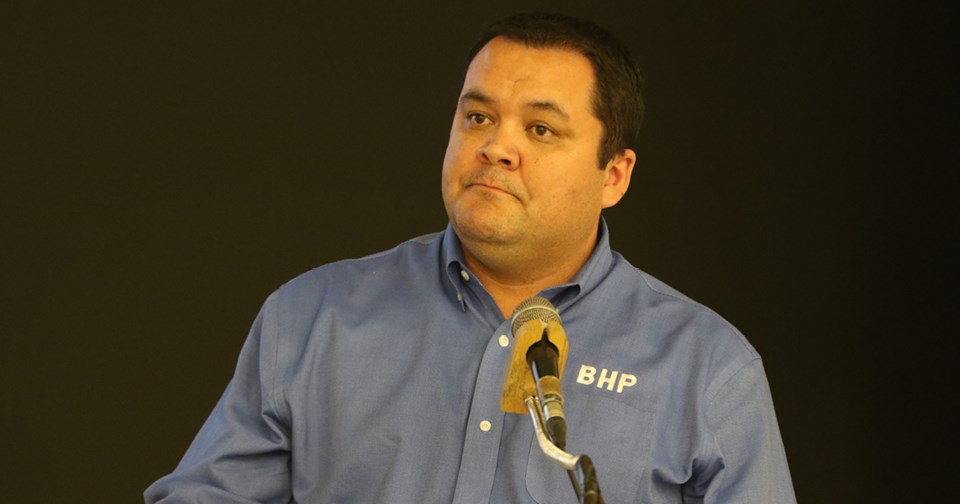LANIGAN — A local BHP spokesperson said his company’s CEO told investors they “over-invested” in the Jansen project because facilities were built to accommodate an earlier time frame.
The CEO, Andrew Mackenzie, made the comment at the Bank of America Merrill Lynch Global Metals, Mining and Steel Conference in Barcelona, Spain on May 14.
“What our CEO was doing was just acknowledging that level of urgency spend that's been undertaken by the company,” Ken Smith, BHP’s manager of corporate affairs for potash, told a public meeting in Langian on May 28.
One of the urgent spends at the site was a 2,586-person camp to house construction workers.
“At the time, it was built to accommodate an earlier time frame for the project,” said Smith, who’s based out of Saskatoon.
Currently, the camp has around 230 to 250 residents. Taking into account different shifts, Smith said, the camp is at around a quarter capacity.
Another spend was the use of new technology, a new type of shaft boring roadheader, to excavate the shafts. The technology was found to be faster and safer.
“We're pleased to say that we're now exporting that shaft boring roadheader internationally out of Saskatchewan,” Smith said.
When the service and production shafts are complete in the next 18 to 24 months, Smith said BHP will have spent around US$3.9 billion on the site. It would require US$5.3 to US$5.7 billion to compete the first phase of the mine.
“Jansen remains an attractive project and potash remains an attractive commodity for the company,” he said. “We've been in the province for for over a decade now. We continue to be a part of the community and we will continue to be for the next period of time.”
Smith said BHP is of the opinion that the world potash market is in a period of oversupply, which is one of the reasons the company’s board of directors has delayed making a final decision on the project.
When the project was first conceived, potash was at US$400 a tonne. A decade ago, there were record high prices of US$870 per tonne. It is now around US$265 a tonne. BHP said its operating expenses would be around US$100 per tonne.
Jansen would be BHP’s first entry into the potash market. The company finds the commodity attractive because the world’s population is projected to grow – with demand for fertilizer to grow with that.
“All we can do at this point is really present the best business case we can for Jansen, when we do decide to present the project to our board,” Smith said.
The manager said they are working to optimize the project and reduce the risk to the company.
For instance, they are working to obtain a permit at a west coast port to ship the mine’s project. One port they are looking at is in BC, while the other is in Washington state. They are also designing the site with health and safety in mind.




